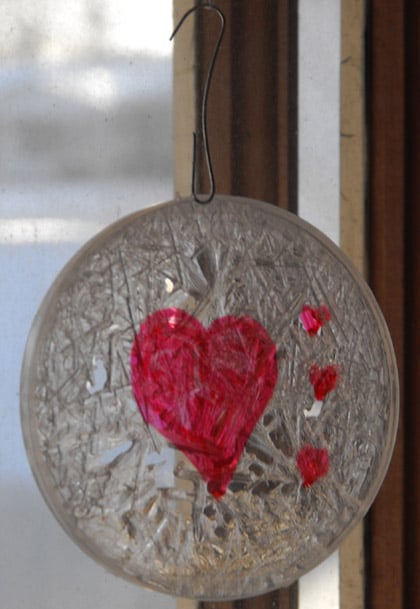Science project
Crystal Wonderland
2011 VIRTUAL SCIENCE FAIR ENTRY
Abstract
When deciding on an appropriate theme for our science fair project, we had to consider a project that was stimulating to my 16 year old autistic patient and equally as fulfilling to me, his adult Personal Care Assistant. Crystal formation is a fascinating subject and can be easily observed by a younger, developmentally delayed student. Thus, giving us our Virtual Science Fair Project theme, as we appropriately named, ‘Crystal Wonderland’.
The project was easily prepared, conducted and observed by my patient. The report research and preparation was not completed by my patient, as he is incapable of such tasks. However, he was involved to the best of his capabilities.
Crystal formation is intriguing! To demonstrate crystal formation, we chose salt. When salt, sodium (Na) and chlorine (Cl), dissolved in water the molecules separated. This caused the water to appear cloudy. We sculptured a pipe cleaner to fit inside of the jar with the cloudy solution. The sculpture was secured by string tied to a pencil. We set the experiment aside and prepared for observation over the course of 3 days. After several days, the water began to evaporate. As the water evaporated, the molecules reattached. The bonding of molecules formed crystals. We saw the beginning formation of crystals almost immediately! Each crystal was unique!
Our project was lots of fun! We hope you find our project just as entertaining and enlightening as we did!
Objective:
This project theme was selected to observe the concept of dissolving substances and crystal formation.
Materials:
- Water
- Epsom Salt
- Food coloring
- Pot (for boiling)
- 16oz glass jar
- Pipe cleaner
- String
- Pencil and magnifying glass
Introduction:
This project was conducted to observe dissolved solutions and the formation of crystals. Crystals are groups of organized molecules that uniquely take on their own shape. In our project, salt was chosen as the dissolved substance and the representation of crystal formation. Salt is made up of two atoms – sodium (Na) and Chlorine (Cl).
The salt evaporated when mixed with hot water and stirred. Over several days, the water/salt solution evaporated at a slow pace. As the water evaporated, the salt molecules began to reattach after being dissolved, this formed salt crystals. The salt crystals were different shapes in size and length. They were clear in color and had shapes that resembled multiple groupings.
Research Questions:
Upon conducting the experiment, the following questions were asked:
- What is salt made of?
- Does water have to be a certain temperature to evaporate salt?
- What happens to water as it sets over time?
- What happens to salt as the salt/water solution evaporates?
- What is a crystal?
- Why do crystals form?
Procedure:
- Gather all materials over a protected surface.
- Boil ¾ cup of water in a small pot until boiling.
- Once boiling, remove from heat and add 1 tablespoon of epsom salt and stir. Keep adding 1 tablespoon at a time until you’ve dissolved the entire 1 cup of epsom salt.
- Create a sculpture with your pipe cleaner, but be conscious of its size, as it should fit easily in and out of the lid of your glass jar.
- After the salt/water solution has cooled, pour it into the glass jar.
- Add food coloring to the solution. Just a few drops will be sufficient.
- Use string to tie a knot from your pipe cleaner sculpture to a pencil.
- Lower the tied sculpture into the solution. The pencil will hold the sculpture in place.
- Observe the jar over the course of 3 days. Record all observations. Take pictures for reference.
- After the 3rd day, remove the sculpture. Handle the crystal sculpture. Record the temperature to touch, the shape and texture.
Results:
The experimental procedure resulted in crystals forming against the sculptured pipe cleaner and at the bottom of the glass jar. During the experiment observations were made for three days.


The experiment results were successful. A crystal formation was desired and achieved. Crystals formed on the sculptured pipe cleaner and at the bottom of the glass jar.
Conclusions
This experiment concludes with the knowledge of crystal formation. After the salt dissolved in water, the molecules were able to reattach during the evaporation process. When the molecules reattached, they solidified again, but into the new form – a crystal.
Questions for Further Research:
If we were to further this experiment, the following questions could be asked:
- Would the results change if the jarred solution were stored in a different environment? i.e., freezing temperature, hot temperature, humid temperature
- Would the results differ with the solution color choice?
- Would the formed crystals eventually melt or disintegrate to its original liquid form?
Bibliography:
http://en.wikipedia.org/wiki/Crystal_formation http://en.wikipedia.org/wiki/Salt_crystal http://chemistry.about.com/cs/growingcrystals/a/aa011104a.htm http://info.lu.farmingdale.edu/depts/met/met205/crystallization.html
Education.com provides the Science Fair Project Ideas for informational purposes only. Education.com does not make any guarantee or representation regarding the Science Fair Project Ideas and is not responsible or liable for any loss or damage, directly or indirectly, caused by your use of such information. By accessing the Science Fair Project Ideas, you waive and renounce any claims against Education.com that arise thereof. In addition, your access to Education.com's website and Science Fair Project Ideas is covered by Education.com's Privacy Policy and site Terms of Use, which include limitations on Education.com's liability.
Warning is hereby given that not all Project Ideas are appropriate for all individuals or in all circumstances. Implementation of any Science Project Idea should be undertaken only in appropriate settings and with appropriate parental or other supervision. Reading and following the safety precautions of all materials used in a project is the sole responsibility of each individual. For further information, consult your state's handbook of Science Safety.













